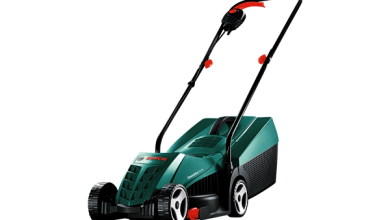Mulch Fly: [Detection, Steps to follow and Products to use]
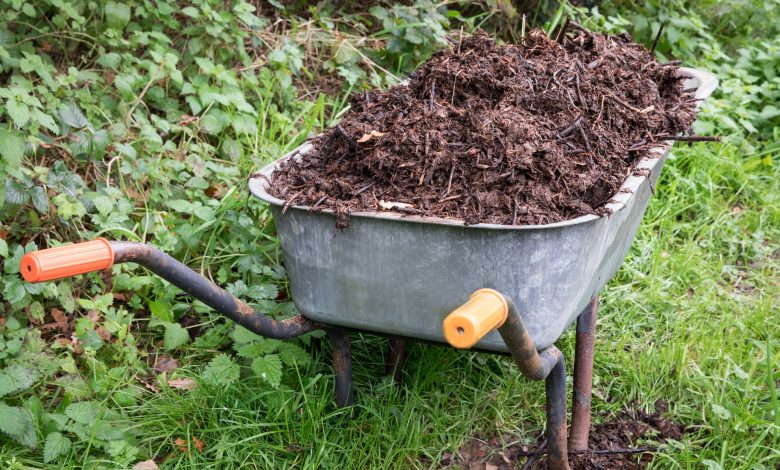
The mulch fly is a small insect that usually roams very close to the substrate of pots or the foot of trees in the garden.
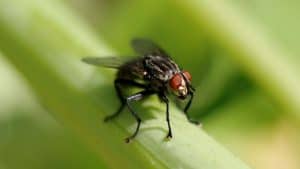 It reproduces very easily, so if the appropriate controls are not generated, it could cause serious damage to plants.
It reproduces very easily, so if the appropriate controls are not generated, it could cause serious damage to plants.
Have you seen any of these in your crops and want to know how to eliminate them? Keep reading because today we will deal with all this topic.
What is the mulch fly?
It is characterized by…
The mulch fly is a black winged insect that appears on the bases of plants, whether they are in pots or in the garden.
It affects
Although the name mulch is associated with it, in general it can affect the substrate and some even tend to call it a moisture fly.
Size
It is quite small in size since it does not exceed 4 mm, but when it occurs in quantity they are very easy to see with the naked eye.
reproductive process
It is important to note that its reproductive process lasts a few days, being capable of laying up to 200 eggs in a single week. After hatching, a larva is generated that will later become the adult fly with elongated legs.
Other physical characteristics
They are associated with the presence of a pair of wings and antennae. Also, males tend to be smaller than females.
Habitat
In terms of habitat preferences, dark places are said to be better for him, which makes mushroom crops one of his favorites. Taking into consideration that leafy plants produce more or less shade on the substrate, special care must be taken to monitor them.
action on plants
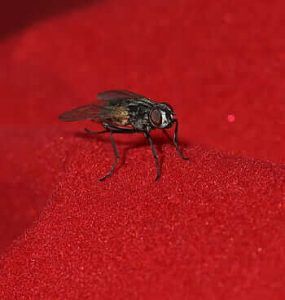 The main harmful cause that it exerts on plants is on the roots, preventing them from being able to absorb the nutrients they need.
The main harmful cause that it exerts on plants is on the roots, preventing them from being able to absorb the nutrients they need.
They could also cause damage to the root hairs, which are the thinnest and simplest parts of the roots.
All this has the consequence that the plant becomes more susceptible to other types of pests or diseases, ending up killing it.
This is due to both the weakness and the fact that they can bring it from another diseased plant. One of the most striking conditions of this pest is that it can appear at any time of the year.
How can we identify what attacks our crops?
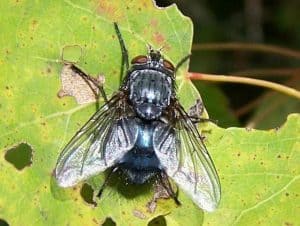 One of the ways to evidence the attack is visually, but this stage can be when the plague is already very advanced and has removed enough nutrients from the plant.
One of the ways to evidence the attack is visually, but this stage can be when the plague is already very advanced and has removed enough nutrients from the plant.
However, another way to notice that something is causing damage to the plant is to observe its structure and vitality.
The mulch fly, by itself, does not cause major damage unless it is uncontrolled and can even eat the stems of plants.
But it is necessary to note that it can be a carrier of diseases by bringing them from other diseased plants. On the other hand, its action causes injuries to the plants and if the substrate has the presence of a fungus, it could get sick very easily.
How to combat the mulch fly?
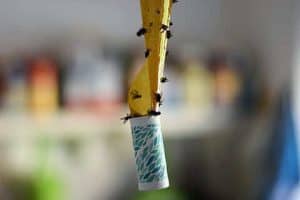 Fighting the mulch fly when it is in its early stages can be really easy with a few household items.
Fighting the mulch fly when it is in its early stages can be really easy with a few household items.
The first of these is usually the fly trap. These are yellow traps that have a special glue on their surface.
The flies, being attracted by the yellow color, stick and thus it is quite easy to eliminate them. Another good strategy to combat its appearance is to place a substrate that absorbs little moisture in the upper part of the pot, such as vermiculite.
In this way, it will be much more difficult for the fly to have the fluffy ground that it likes to lay its eggs and it will not be able to reproduce as much. Since in many places it is also known as the humidity fly, it is a good plan to avoid excess humidity by controlling irrigation well.
What products can we use to eliminate the mulch fly?
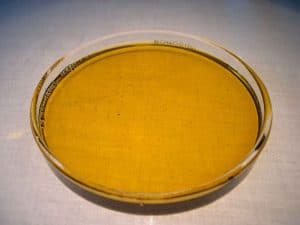 The products used will vary according to household or chemical use. On the subject of home products, neem oil becomes an ally of great value to combat many pests.
The products used will vary according to household or chemical use. On the subject of home products, neem oil becomes an ally of great value to combat many pests.
Its use is also quite simple and consists only of spreading it over the entire surface of the plant with a spray bottle with some water.
In the same way, there are chemical products known as insecticides that can cover the need in case the plague is very numerous. In fact, when you notice that it has spread to several plants, it is essential to act quickly.
The mulch fly could be considered one of the least harmful pests in its actions, but that is not why it can be left unattended. This is because although it does not cause the death of a plant, it can serve as a gateway for something more harmful to enter.
Bibliography and references
- Bengochea Budia, Paloma; Garzon Hidalgo, Agustin; Hiernaux Candelas, Luis. (2014). Prevention of the health status of organic crops and application of products. Auditorium Editions. Madrid Spain.
- From the doctor, Bruno. (2014). 500 secrets to have a wonderful garden. CLOE editions. Madrid Spain.
- Aguilar Yanez, Enrique. (2014). Determination of the health status of plants, soil and facilities and choice of control methods. IC Publisher. Malaga, Spain.
- Cranshaw, W.S. (2013). Pest management for indoor plants. Colorado State University. Colorado-United States. Reproduced from: https://mountainscholar.org/bitstream/handle/10217/201115/AEXT_05595eng_201306.pdf?sequence=1
- Lomeli- Flores, J. Refugio; Rodriguez-Leyva, Esteban; Torres Ruiz, Alfonso. (2016). Biological pest control in protected agriculture in Mexico. XXVII National Course on Biological Control. Guadalajara Mexico. Reproduced from: https://www.cabi.org/wp-content/uploads/Lomeli-Flores-2016-Biocontrol-in-protected-agriculture.pdf

![Photo of Agapanthus: [Cultivation, Care, Irrigation, Substrate, Pests and Diseases]](https://www.complete-gardening.com/wp-content/uploads/2022/08/agapanthus-cultivation-care-irrigation-substrate-pests-and-diseases-390x220.jpg)

![Photo of Crickets in the Garden: [Characteristics, Detection, Effects and Treatment]](https://www.complete-gardening.com/wp-content/uploads/2022/08/crickets-in-the-garden-characteristics-detection-effects-and-treatment-390x220.jpg)
